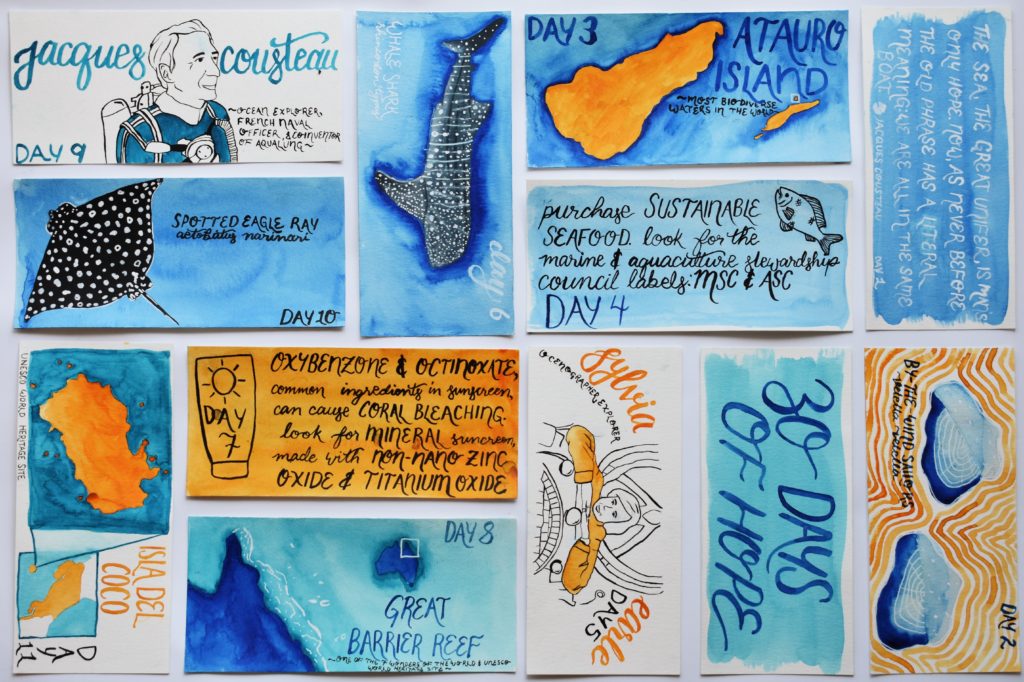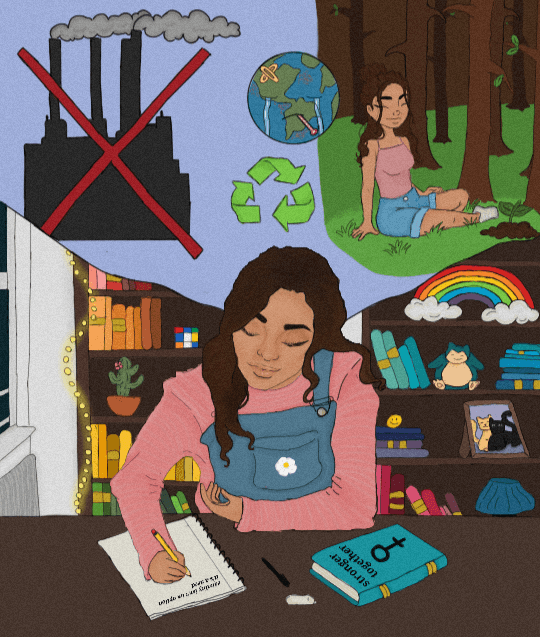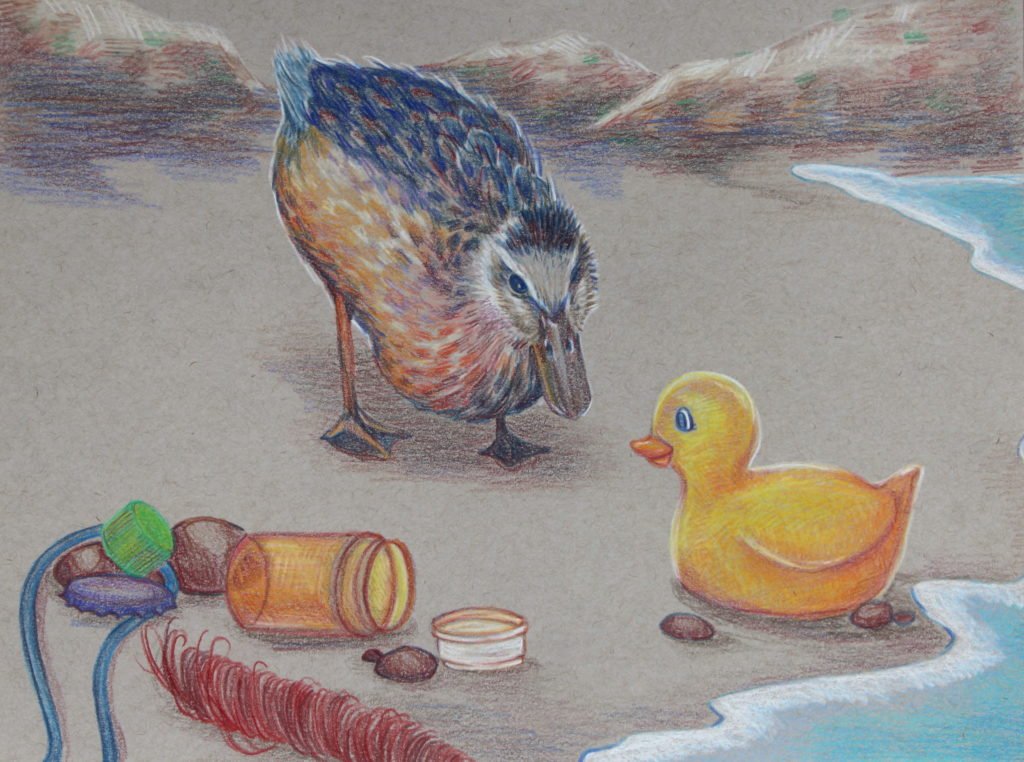 937
937  6 mins
6 mins When Bow Seat launched their first ocean conservation contest, they received 68 student essays.
In the 10 years since their Ocean Awareness Art Contest has received over 24,000 submissions from young artists from 133 countries and all 50 American states.
Each submission embodies the voice and vision of an 11 to 18-year-old student.
Every submission is a powerful declaration – a declaration of care and concern for ocean conservation.
The contest is Bow Seat’s flagship program. But the scope and impact of their activities expand beyond the event for young artists. Bow Seat provides an innovative platform where teens connect and create for the oceans. The platform offers resources, articles, webinars, podcasts, films and interactive games related to climate change and ocean conservation.
And during the 2020 US presidential election, they also ran a non-partisan, youth-led Voteless not Voiceless campaign. The idea was to collect and share stories that encouraged people to mobilize and elect representatives that agreed to speak out for environmental issues and implement policies that would address climate change.
View this post on Instagram
Their newest program, the Future Blue Youth Council was launched in January 2021. It is a panel of 14 Ocean Awareness Art Contest alumni from all over the world. Ranging in age from 16 to 19, they work together to advance Bow Seat’s mission to empower young artists to advocate for their future and for our environment.
They have launched the Future Blue Youth Council Fellowship Program, a “for-youth-by-youth” environmental grant-making program. Applications are still open until the 1st of August.
We spoke with both Olivia Baud, Social Media Manager and Communications Specialist at Bow Seat and Jasmine Rodman one of the young artists who is a member of the Future Blue Youth Council and a 17-year-old artist and entrepreneur.
(Edited for clarity).
Young artists transcend geographical boundaries
In only 10 years Bow Seat has evolved from a regional New England art contest to a dynamic global space with a network of diverse partners. You now reach teens in 133 countries. Tell us a little bit about how you did this.
OB: Well, art transcends geographical boundaries, right? And we find that young people around the world are super enthusiastic about advocating for our oceans and water. They know that it’s an important issue that needs to be talked about. So it’s been a process of building bridges and amplifying youth voices. Our global community has grown over time through our outreach efforts. But it grows also as our student artists talk about how important ocean conservation is. We also have an awesome team of judges who look at every submission. We all work in English. But we also accept submissions that are in another language as long as they come with a translation. Since I joined Bow Seat, it’s been amazing to see the different cultural perspectives and styles of art coming from our global community of youth and young artists.
JR: Our biggest challenge on the Future Blue Youth Council, honestly, is the time zones! Everyone on the council is wonderfully supportive. And having so many different perspectives helps us create projects that are more accessible to everyone. We focus very much on the art and on the ocean. When you have 14 passionate youth, the projects created are pretty incredible!

Artwork: Jasmin Rodman – submitted to and awarded by Bow Seat
The Ocean Awareness Art Contest
The winners of the contest receive a scholarship. For the 2020 contest, you received over 5,200 submissions and awarded 340 scholarships. How do the winners use the scholarships?
OB: Award winners can use the money however they want. There really are no restrictions, and we don’t ask them for a record of how they’ve used the money. But we do encourage them to use it as a way of driving further change in the environmental art space. We do hear back from some alumni, and some have used the money for school, art supplies, or personal needs. We’ve actually had a good number of students that give the money back to Bow Seat saying ‘Hey! We’d love to see the money used towards other students and other awards’. I was astounded by the number of winners who asked Bow Seat to re-distribute their prize money last year.
The artwork on display
You have an online gallery and a Youtube channel. What other spaces are you using – virtual or “in real life” – to show the work of these young artists?
OB: So, obviously COVID has changed a lot of things with respect to museum exhibitions. But we do currently have an exhibit at the New Bedford Whaling Museum. Hopefully, we’ll be able to have more in-person exhibits in the future as things become safer. We also have organizations reaching out to us. They ask us to feature our student artwork on their social media or on their websites and newsletters. For example, the American Cetacean Society (the world’s first whale conservation group) featured some of our student pieces in November 2020 through their social media accounts.
Educators who want to use student artwork in their classrooms as an educational tool will reach out to us, too. When people see our online gallery, especially when reading the reflections that go along with the art pieces, they start to recognize the impact that the art-making process has on learning about environmental issues.

Artwork: Emily DaSilva – submitted to and awarded by Bow Seat
Beyond the contest
The influence that this contest has is much larger than it seems…
JR: It is incredible to listen to the founder Linda Cabot. She explains how it all started with her camera and her two daughters. They made the documentary that launched the contest and then it grew and grew and grew. Bow Seat keeps snowballing and now we have a global art contest, the Voteless not Voiceless campaign, in-person gallery viewings, webinars, the Future Blue Youth Council…
And it is so important to have a Council with a youth voice right at the forefront of Bow Sea. It’s important to be on the Council and be able to create our own program and have a say in the direction of the program. I think that Linda and everyone else that has been involved over the years is really happy with how it’s going. It’s an incredible thing to see all of these youths getting involved. When you create art around a subject it’s more than just understanding the information about environmental issues or about the climate crisis or the ocean. You actually have to digest it and really feel it on both an emotional and intellectual level before you are able to put it on the page.
I think that the Council does a lot for anyone who enters, they have a deeper understanding and better emotional connection to environmental issues than if they hadn’t entered.

Artwork: Jessica Xia – submitted to and awarded by Bow Seat
We All Rise
After 10 years of Bow Seat, what does the future look like?
OB: This year, we received nearly 6,000 entries to our 2021 Ocean Awareness Art Contest—almost 800 more than last year! Moving into the future we want to uplift and encourage voices that have historically been underrepresented in our programming. That’s why we launched the We All Rise Prize this year, which will recognize 2021 Ocean Awareness Art Contest participants in the U.S. who identify as Black, Indigenous, or Latina/o/e and whose entries demonstrate notable artistic achievement in their chosen category.
We’ve also noticed over time an increasing number of spoken word poetry submissions to our Contest. Spoken word is an art form in and of itself. We wanted to honour that by celebrating the medium and encouraging people to try it out. That’s why we launched the Voice of the Sea Award this year as well. Given that the Future Blue Youth Council was only just launched in January of 2021, we’re excited to see this new program and its initiatives blossom.
View this post on Instagram
The life of a young artist
At the age of 15 Jasmine started her own company, Ocean Child Creative. In closing, we ask her to tell us more about her entrepreneurial venture.
JR: I live on a small island, and despite being surrounded by the ocean there are not that many opportunities for youth to become involved with environmental, specifically ocean, issues. So I combined my interest in the environment with art and decided to start a business. I create prints, stickers and cards that are all inspired by the ocean. I sell them at local shops and markets in the summer. Some of the money goes back to different ocean conservation organisations, which I change yearly. Doing this, I get to see the physical store side-of-things. But I also get involved in other organisations. For example, I did a mural for an at-home mural festival run by Pangeaseed last year during the first lockdown.
And it was through what I’m doing at Ocean Child Creative that I found out about the Pangeaseed event as well as Bow Seat. It also gives me a way not only to make money but also to share information and my love for the ocean. People often pick up a print or a card which leads to questions and a discussion. It’s amazing to have that as a conversation starter as well as a nice art piece. It’s been a great experience and I am learning a lot by creating a small business
I’m really happy that I have been able to create this business. And I’m thrilled about all the opportunities it has led to.
Click Here for more about the Ocean Awareness Art Contests or other Programs check out Bow Seat’s website
Follow Bow Seat on Instagram, Facebook or Twitter to keep up with what they are doing and to see some of the work submitted to the Ocean Awareness Art Contest.
Artwork Credit
Feature photo credit: Juwan Mayes, 2014, High School Art submitted and awarded by Bow Seat


 https://www.facebook.com/calaisfoodcollective/photos/186494746336381
https://www.facebook.com/calaisfoodcollective/photos/186494746336381 https://bowseat.org/gallery/beauty-and-the-deep/
https://bowseat.org/gallery/beauty-and-the-deep/